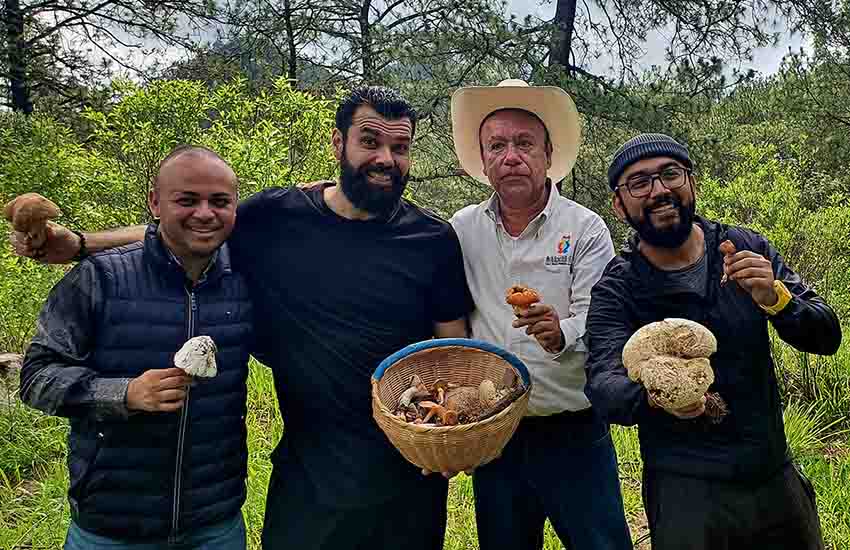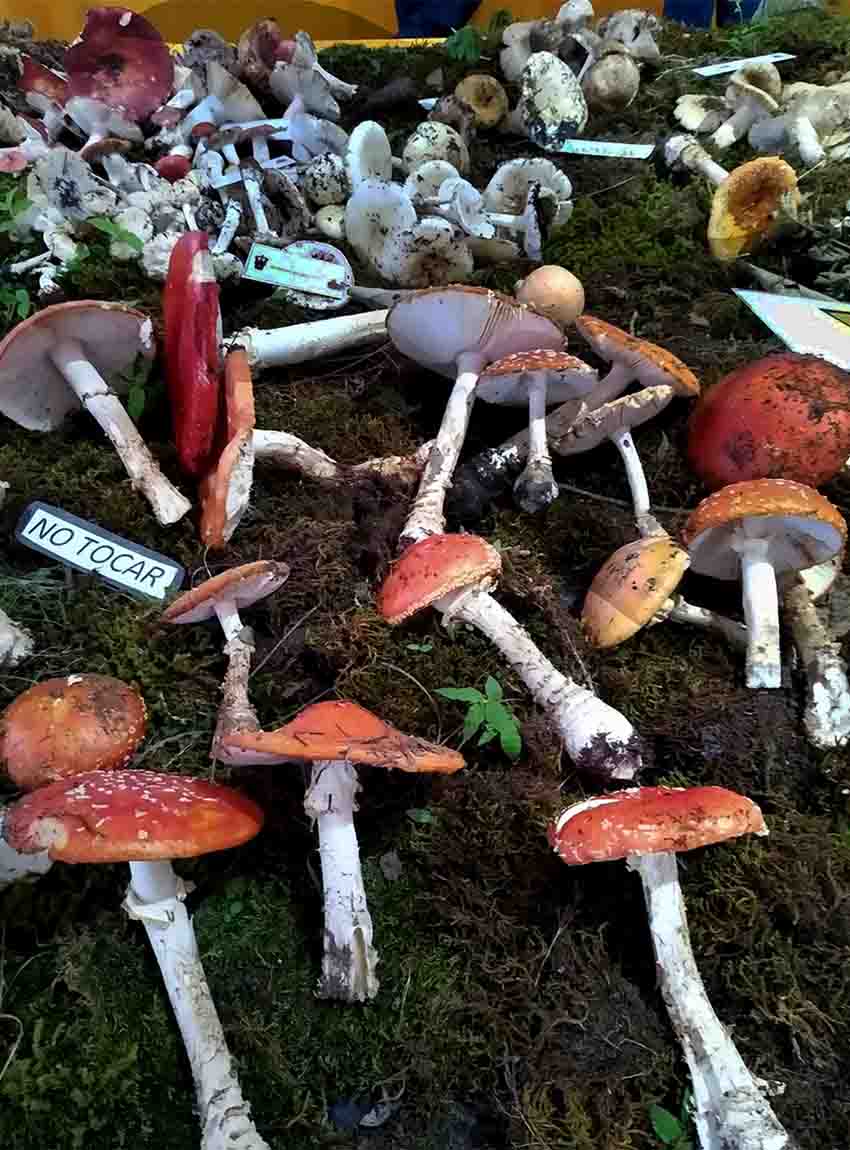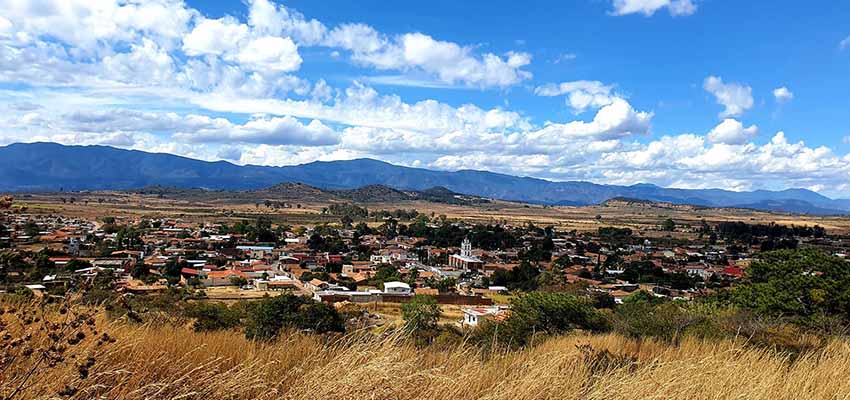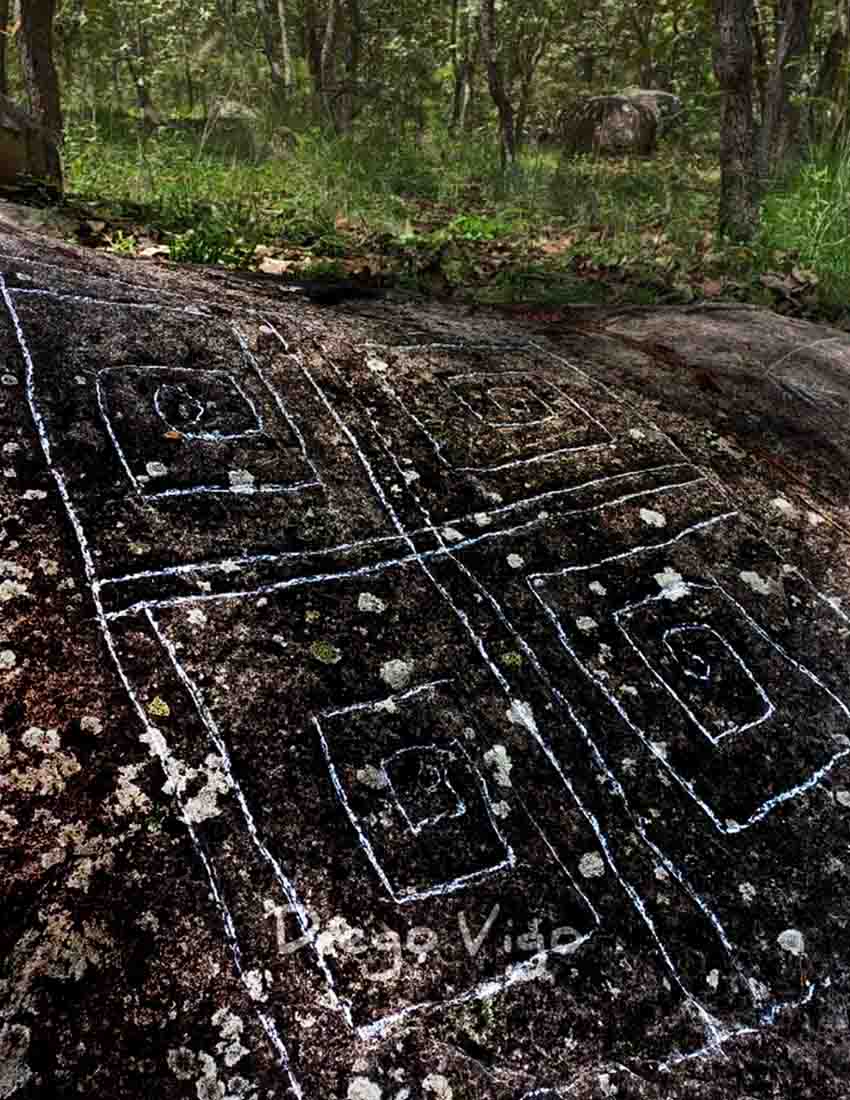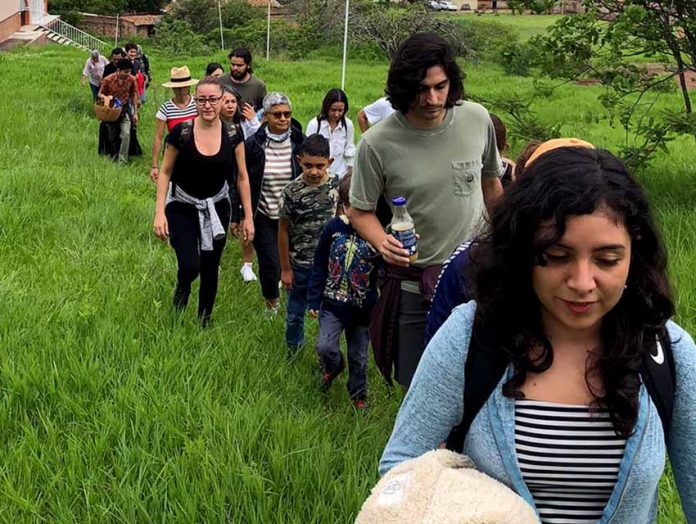Mixtlán is a very small town located about halfway between Guadalajara and Puerto Vallarta in Jalisco. Its name means “the place of the clouds,” but in recent years it has become better known as the land of mushrooms.
This is thanks to Mixtlán’s Director of Tourism, José de Jesús Preciado de León, founder of the town’s popular Feria del Hongo: the Mixtlán Mushroom Festival, which was held this year over the weekend of July 15 to 17.
“I founded the Feria in 2016,” Preciado told me, “so this is the seventh edition of the event. This festival is educational, with emphasis on science and ecology. For example, we have activities that take place during guided tours in the woods. On Saturday and Sunday mornings, groups leave town at 8 a.m. and they head up into the highest parts of the hills surrounding us.
“Each group is accompanied by an expert mycologist from the University of Guadalajara. The mycologists identify the varieties of mushrooms the group finds and explain how to distinguish them from other mushrooms and also how to pick them and how to transport them.”
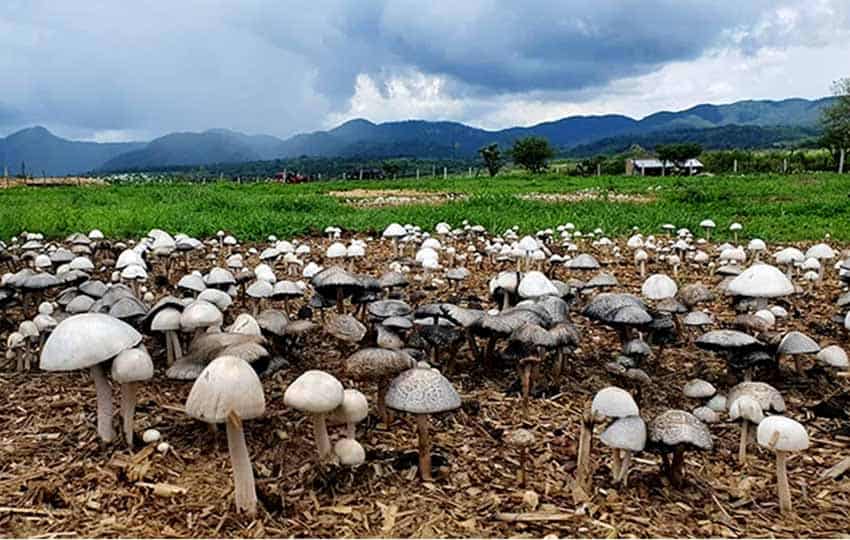
I was surprised to learn that there is a proper way to pick and transport mushrooms. The correct way to collect a mushroom, Preciado says, is to cut it off at its base with a knife. Grabbing and pulling it is all wrong because that mushroom is just the “fruit” of the fungus, which is actually a network of mycelium fibers hidden from view under the ground and literally connecting together all the trees in the forest.
While we commonly think of mushrooms as plants, it seems they are really more closely related to the animal kingdom.
Once you cut the mushroom, comments Preciado, you should deposit it in a basket: the woven kind, made from wicker or reeds. The reason for this is that the mushroom is constantly liberating spores in order to reproduce itself. So, the construction of a traditional basket allows the spores to fall to the ground.
“Yes,” confirms Preciado. “As we walk about collecting mushrooms, we are also distributing its spores all over the woods.”
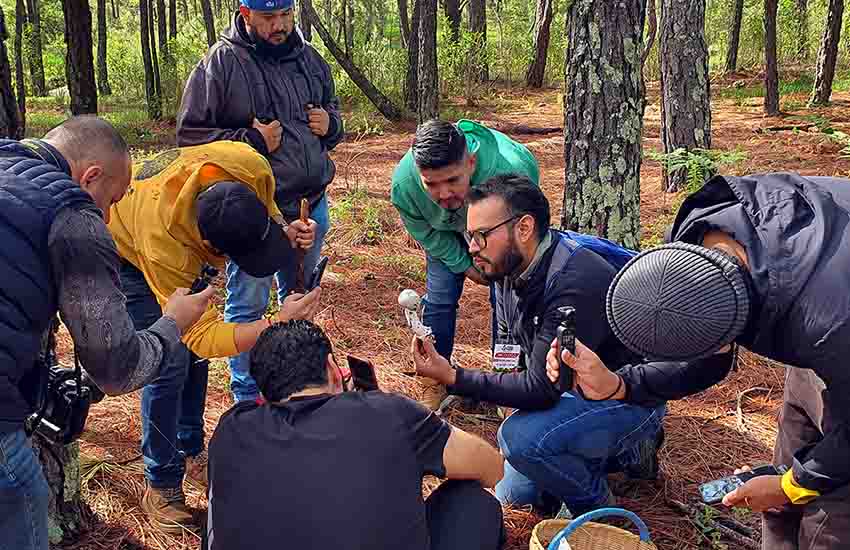
This ecological aspect of the festival takes place out in the hills, and when the mushroom gatherers get back to town, they find an extensive exhibition laid out on tables. Here the mushrooms have been cleaned, classified and tagged by the mycologists and then carefully placed on a decorative bed of moss and other wild plants.
At each table, there are experts to explain or clarify doubts the visitors might have about mushrooms. The public can admire them and photograph them, but they’re not allowed to touch them.
“In Mixtlán, we have over 160 kinds of wild mushrooms,” says Preciado. “With the first rains, they start popping up in the meadows and clearings. Here we call them porras or champiñones silvestres (wild mushrooms).
“As the rains continue and the temperature drops, all kinds of them begin to appear in the high forest, reaching their maximum in July and August. Of the 160 types that grow around here, 40 species are edible: that’s a lot!”
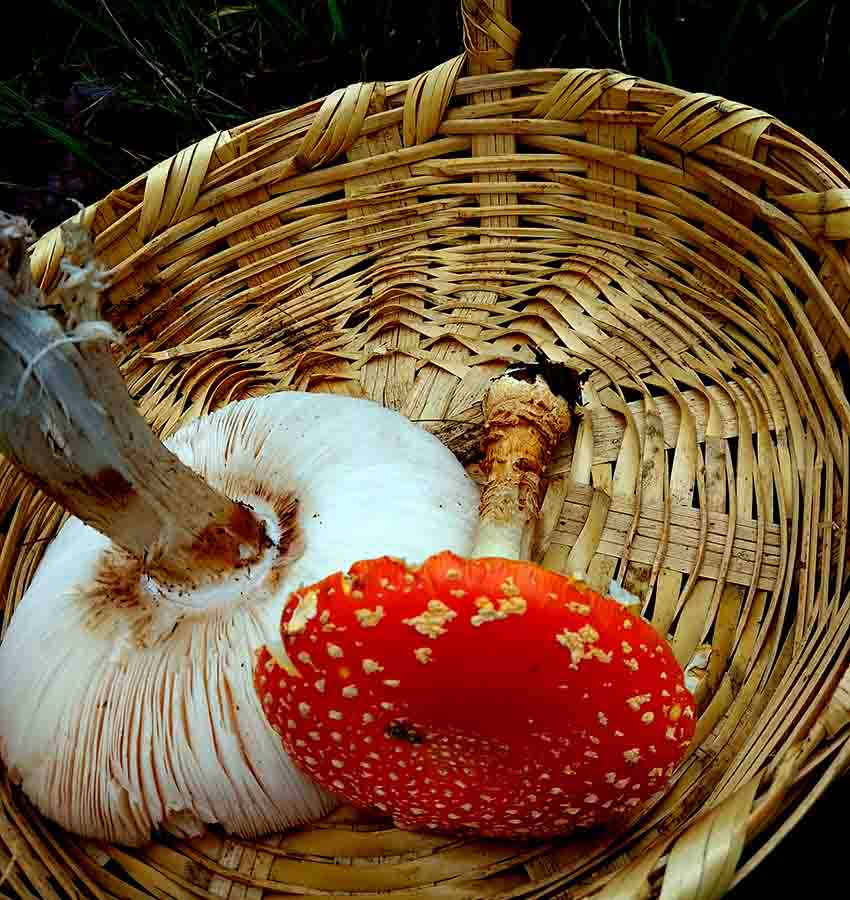
The town of Mixtlán is full of mushroom eaters, he says.
“When the rains are upon us, families head for the woods to collect mushrooms: children, grandparents, everybody goes out together to pick mushrooms! So this festival of ours is a homage to these traditional hongueros (mushroomers) who are passing down from generation to generation the culture of mushroom-gathering.”
Preciado says that Mixtlán is the most “mushroom crazy” of all the communities in Mexico’s Sierra Occidental, “We eat the most and have the greatest respect for them: so that’s why we have a mushroom festival, to commemorate the benefits that Mother Nature provides for us.”
Mushrooms are considered a “complete food,” containing a lot of protein — although not as much as meat or milk. They have all the essential amino acids required by human beings and even a little fat. It is said that if they had to choose between meat and mushrooms, many of Mixtlan’s citizens would opt for the latter. “This,” states Guzmán Ávalos of the University of Guadalajara Mycology Lab, “is definitely not the norm in Jalisco.”
The people of Mixtlán traditionally eat only four kinds of mushrooms. “But,” says Preciado, “in 2015, I began looking at some of the other species. I brought mycologists here, and based on what they told us, we begin to try some of the others … and now we are enjoying 10 edible species … and there are still 30 edible species more that we haven’t even tasted yet, out of an abundance of caution.”
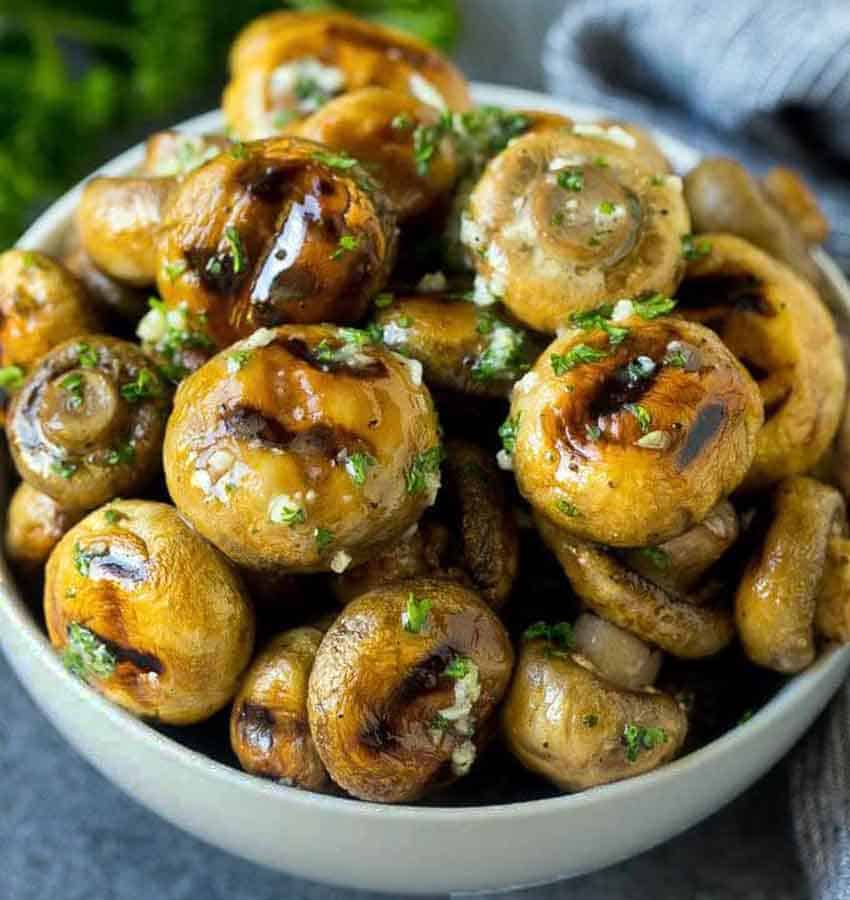
“They are safe to eat, but we don’t know how to prepare them, and we’re afraid to eat them. But little by little, thanks to the Feria, we are slowly exploring this panorama of options — all those other edible mushrooms that are never taken out of the woods.”
Jesús Preciado became Director of Tourism in 2016. “At that time,” he says, “I got the idea for a festival, but I wanted something well-organized, not a pachanga (noisy party). No, we wanted our festival to be ecologically sound, educational, scientific, gastronomical, cultural, musical and a source of income for the townspeople.
“This year, we inaugurated the festival on Friday, July 15. We had walks to the woods on Saturday and Sunday mornings from 8 a.m. to 12 p.m., and in the afternoons, there were workshops and conferences conducted by experts from the University of Guadalajara. Then there was a Best Drawing Competition for kids, followed by the Biggest Mushroom Contest. We had 11 entries for that, and the largest measured 32 centimeters in diameter.
“It was a brown Ganoderma, and the person who picked it received 1,000 pesos. We also had stands offering mushrooms to eat. Mixtlán has a population of 2,000 people, but over this three-day festival, our little town received around 6,000 visitors!”
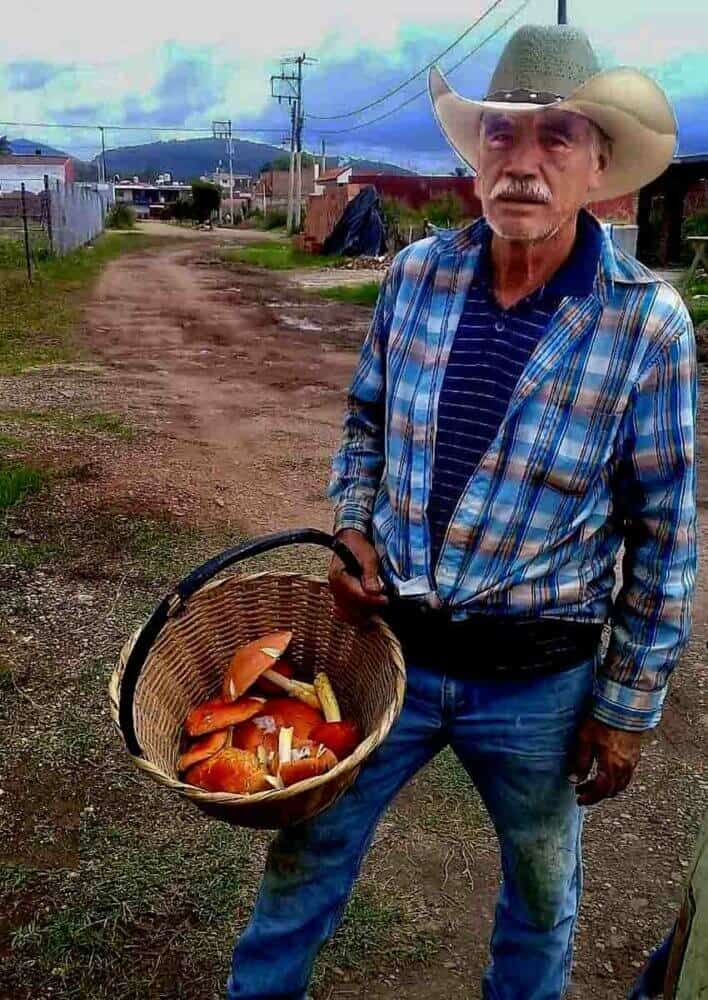
Besides the Feria del Hongo, what else does Mixtlán have to offer?
Rock art is one option. Mixtlán has four or five sites with petroglyphs. as well as the ruins of pre-Hispanic settlements. There is also a spring with naturally carbonated water. Local people add salt, chile and limòn (lemon-lime) to make a drink called “la rusa” in Mexico. Finally, for the brave-hearted, there is a lovely waterfall and pool called El Charco del Condenado (The Pool of the Damned), into which, a legend says, the irate townsfolk once threw a local man who had been transformed into the Devil.
“This is a great place for a swim, but people still fear that if they jump in, they will grow horns,” Preciado told me.
To appreciate everything that little Mixtlán has to offer, mark your 2023 calendar right now. Next year, the Feria del Hongo will take place on Friday, Saturday and Sunday, July 14–16 — and don’t forget your wicker basket!
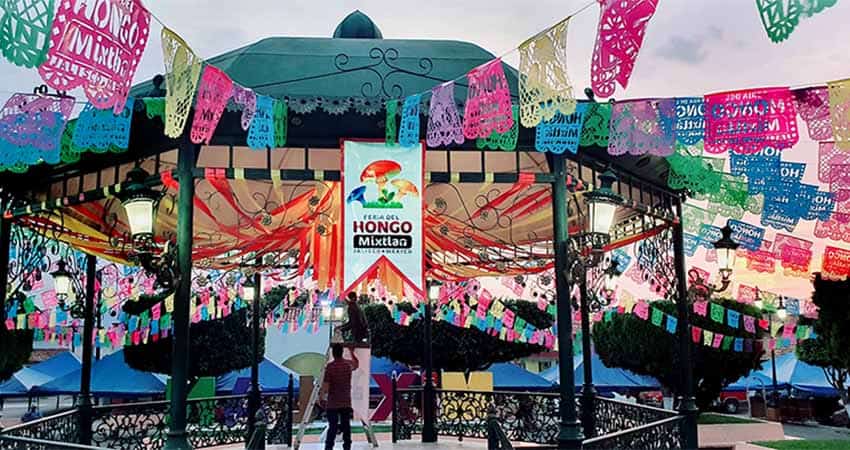
The writer has lived near Guadalajara, Jalisco, since 1985. His most recent book is Outdoors in Western Mexico, Volume Three. More of his writing can be found on his blog.
